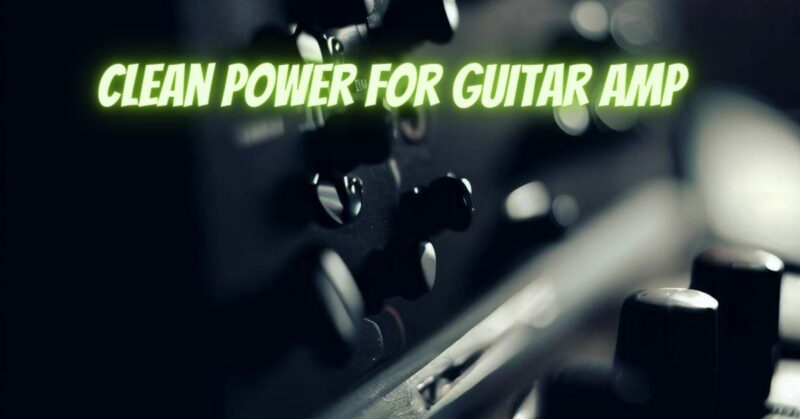Achieving the best sound quality from your guitar amp requires more than just the right guitar and settings—it also depends on the quality of the power it receives. Clean power plays a vital role in ensuring optimal performance, reducing noise, and preserving the integrity of your amp’s tone. In this article, we will explore the importance of clean power for your guitar amp and discuss practical steps you can take to achieve it.
- The Significance of Clean Power:
a. Noise Reduction: Clean power minimizes unwanted noise, such as hum, hiss, or interference, in your guitar amp’s signal chain. It provides a stable and consistent power supply, reducing the likelihood of electrical disturbances that can degrade the sound quality.
b. Signal Integrity: Clean power helps maintain the integrity of your guitar signal, preserving the nuances and dynamics of your playing. It ensures that your amp accurately reproduces the frequencies and tones you intend, without adding unwanted artifacts or distortion.
c. Component Protection: Power fluctuations, voltage spikes, and electrical disturbances can damage sensitive components in your guitar amp. Clean power helps protect your equipment by providing a stable voltage and reliable current flow, prolonging the lifespan of your amplifier.
- Practical Steps to Achieve Clean Power:
a. Power Conditioners: Consider using a power conditioner to improve the quality of power reaching your guitar amp. Power conditioners act as a buffer between the power source and your amplifier, providing voltage regulation, surge protection, noise filtering, and ground loop isolation. These devices help eliminate electrical disturbances and provide cleaner power for your amp.
b. Dedicated Circuits: Plug your guitar amp into a dedicated circuit whenever possible. Sharing electrical outlets with other devices can introduce electrical noise and interference. By connecting your amp to a dedicated circuit, you minimize the chances of power fluctuations caused by other appliances.
c. Quality Power Cables: Invest in high-quality power cables with proper shielding. Poorly shielded cables can pick up interference from nearby electrical sources, contributing to noise in your guitar amp. Using well-insulated cables minimizes the risk of interference and ensures a cleaner power connection.
d. Grounding: Ensure that your guitar amp’s grounding is properly configured. A solid ground connection helps eliminate ground loops and reduces the risk of noise and hum. Consult your amp’s manual or a qualified technician to ensure proper grounding practices.
e. Surge Protectors: Utilize surge protectors to safeguard your guitar amp from voltage spikes and power surges. Surge protectors are designed to absorb excess electrical energy, preventing it from reaching your equipment. This added protection can extend the life of your amp and minimize the risk of damage caused by power fluctuations.
- Regular Maintenance:
a. Clean and Inspect Connections: Periodically clean the power connections and inspect them for any signs of wear or damage. Dirty or corroded connections can lead to poor power transfer and introduce noise into the system.
b. Maintenance by Professionals: Consider having your guitar amp professionally serviced and maintained regularly. Qualified technicians can inspect internal components, clean contacts, and ensure that the power supply section of your amp is functioning optimally.
Conclusion:
Clean power is essential for achieving the best sound quality from your guitar amp. By minimizing noise, preserving signal integrity, and protecting your equipment, clean power ensures an enjoyable playing experience. Implementing steps such as using power conditioners, dedicated circuits, quality power cables, proper grounding, surge protectors, and regular maintenance can significantly improve the cleanliness of the power supplied to your guitar amp. Embrace the benefits of clean power and unlock the true potential of your amplifier’s tone.


